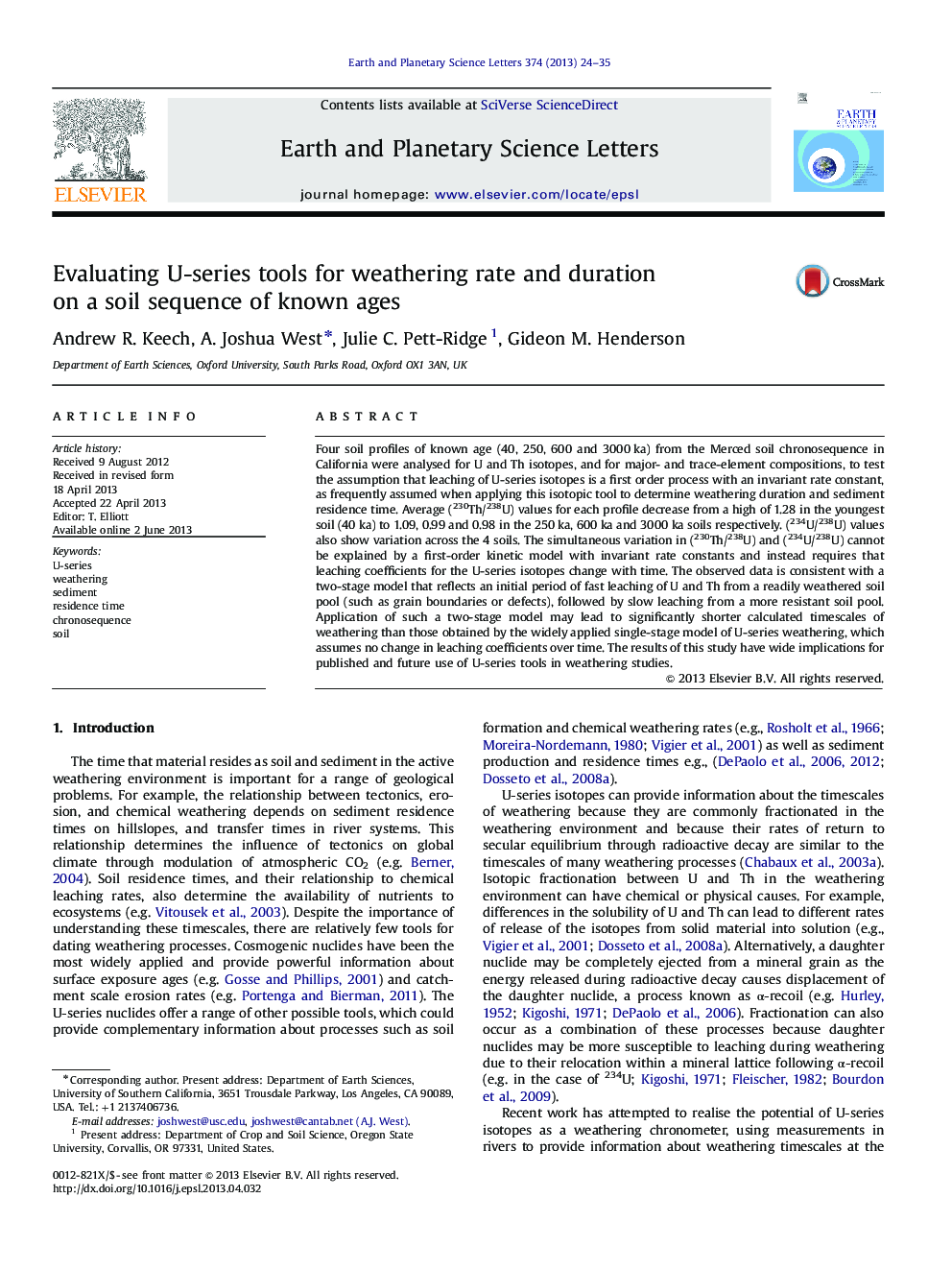| Article ID | Journal | Published Year | Pages | File Type |
|---|---|---|---|---|
| 6430127 | Earth and Planetary Science Letters | 2013 | 12 Pages |
â¢Reports U and Th isotope abundances and ratios of soil chronosequence.â¢Allows for testing the use of U-series nuclides as weathering chronometers.â¢Data cannot be explained by a single set of leaching coefficients for U and Th, but can be explained by 2 stages of leaching with distinct coefficients.â¢Varying leaching coefficients can influence inferred ages >~100 kyr.â¢Leaching coefficients for 230Th and 232Th may differ.
Four soil profiles of known age (40, 250, 600 and 3000Â ka) from the Merced soil chronosequence in California were analysed for U and Th isotopes, and for major- and trace-element compositions, to test the assumption that leaching of U-series isotopes is a first order process with an invariant rate constant, as frequently assumed when applying this isotopic tool to determine weathering duration and sediment residence time. Average (230Th/238U) values for each profile decrease from a high of 1.28 in the youngest soil (40Â ka) to 1.09, 0.99 and 0.98 in the 250Â ka, 600Â ka and 3000Â ka soils respectively. (234U/238U) values also show variation across the 4 soils. The simultaneous variation in (230Th/238U) and (234U/238U) cannot be explained by a first-order kinetic model with invariant rate constants and instead requires that leaching coefficients for the U-series isotopes change with time. The observed data is consistent with a two-stage model that reflects an initial period of fast leaching of U and Th from a readily weathered soil pool (such as grain boundaries or defects), followed by slow leaching from a more resistant soil pool. Application of such a two-stage model may lead to significantly shorter calculated timescales of weathering than those obtained by the widely applied single-stage model of U-series weathering, which assumes no change in leaching coefficients over time. The results of this study have wide implications for published and future use of U-series tools in weathering studies.
